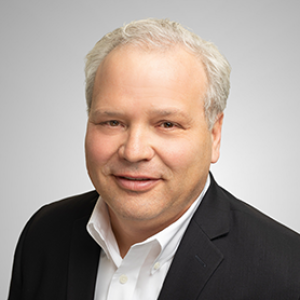Keeping community healthcare local and independent is far from easy.
Twenty rural hospitals, for example, closed their doors in 2020, a high-water mark in the past 15 years. According to the Center for Healthcare Quality and Payment Reform, every state except Delaware, Maryland, New Jersey and Rhode Island has at least one rural hospital at immediate risk of closure, and even before the COVID-19 pandemic, “In 21 states, 25 percent or more of the rural hospitals were at immediate risk” due to persistent financial losses and/or low or non-existent financial reserves.
Some struggling hospitals are tempted to align with a bigger health system to create economies of scale and keep their doors open. Yet, the research about impacts of hospital mergers suggests there are downsides to rural hospitals choosing to merge. A 2012 Robert Woods Johnson Foundation analysis concluded:
- Hospital consolidation results in higher prices.
- Physician-hospital consolidation has not led to either improved quality or reduced costs.
- Hospital competition improves quality of care.
More recent analyses have found:
- A significant reduction in patient services including outpatient non-emergency visits, onsite diagnostic imaging technologies, and availability of obstetric and primary care services.
- Post rural hospital mergers, the percentage of hospitals offering maternal and neonatal services decreased 13.4 percentage points.
- “The surgical service line decreased by 5.0 percentage points at merged rural hospitals versus comparison hospitals.”
- Reduced mental health and substance abuse disorder services as measured by hospital discharges.
- Increases in physician burnout.
There is a better way to thrive than mergers and acquisitions.
It may be tempting to believe the best way for independent hospitals to create leverage and economies of scale is mergers and acquisitions. We have created a better way – leverage tech-enabled shared services to retain local control. For example, we help optimize revenue cycle performance and have collected over $370 million for 110 independent hospitals.
For more than 40 years, Ovation Healthcare has helped manage independent hospitals with a laser-focus on financial health and sustainability. Our client hospitals are succeeding and have stronger key metrics than comparable independent, community hospitals.
Compared to peer hospitals, Ovation Healthcare hospitals have:
We work with more than 200 independent, not for profit hospitals. As the result of our collaborations, we have identified seven things that thriving organizations do.
1. Instill an organization-wide commitment to clinical and quality performance
Hospitals with this commitment:
- Use evidence-based practices to reduce variations in care.
- Perform a self-assessment/mock survey every two years to review potential deficiencies that could fall on the new SAFER evaluation matrix spectrum for The Joint Commission or audit tools used for CMS, DNV, HFAP, etc., and track self-identified deficiencies between surveys.
- Monitor and improve quality and patient experience performance in alignment with Medicare Stars, Hospital Compare, Leapfrog, payer contracts and more.
2. Invest in a three-year strategic plan that is a road map for the organization’s desired future and has identified ways to achieve its goals, as well as an annual business plan.
3. Have a robust organizational focus on improving financial performance.
Hospitals with this focus:
- Reduce accounts receivable days and improve revenue cycle management.
- Improved payer yield by:
Evaluating payer contracts and assessing payer performance, - Pinpointing denial contributors,
- Analyzing operational workflows,
- Investigate revenue cycle management performance, and
- Identifying the variance between paid and contracted amounts.Ensure the hospital is receiving all the Medicare and Medicaid reimbursement to which it is legally entitled under the Medicare Reimbursement and Cost Reporting Regulations.
- Align with a GPO to secure competitive pricing on supplies and equipment.
4. Emphasize workforce productivity and employee engagement.
Hospitals with this emphasis:
- Benchmark staffing levels against peer and benchmark hospitals.
- Use patient acuity to determine clinical staffing levels.
- Measure employee burnout and satisfaction and improve engagement with education and training.
5. Cultivate an engaged Board of Directors.
- Independent hospitals without leadership at the Board level will eventually sell to a larger, more robust organization. Board-level leadership starts with the hospital CEO and is supported by the supporting C-suite executives. To provide oversight and direction, new members need to gain foundational knowledge and learn how a hospital should function.
6. Prioritize cybersecurity protection and resiliency.
“If cybersecurity isn’t one of your top two priorities, it needs to be. If you don’t have a very robust security profile, you’re likely to get hit,” emphasized UVM Health Network Chief Medical Information Officer Doug Gentile, MD whose health system weathered a ransomware attack in October 2020 that’s estimated to have cost $50 million, mostly from lost revenue.
There are seven practices we recommend to get ready for the inevitable cyberattack, including:
- Know your network,
- Adopt robust multi-factor authentication, and
- Evolve to Zero Trust.
7. Focus on the future.
- Solidify your outpatient strategy and presence. Healthcare is rapidly moving from inpatient to a focus on outpatient and home-based care. For independent hospitals to continue to thrive, they need to identify ways to extend care beyond the hospital, such as ambulatory surgery centers (ASCs), and become the health hub of the community.
- Lock down referrals. Use analytics to understand out-of-network referrals and leakage/outmigration. Make it easy for providers to refer to in-network services and easy for patients to stay in your network with point-of-care scheduling. Engage employers to reduce outmigration.
- Know and grow your lives. In addition to driving market share, hospitals and health systems must focus on expanding the covered lives they serve within their systems. Savvy systems are using consumer outreach analytics and digital engagement.




